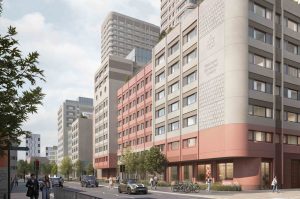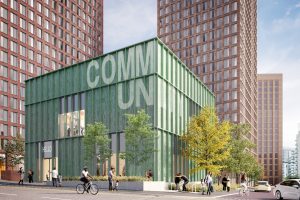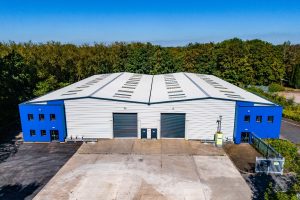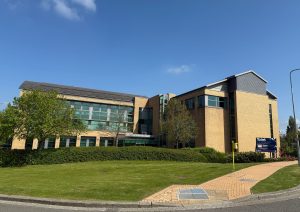First look – the National Graphene Institute

THEBUSINESSDESK.COM has caught a first glimpse of the interior of the city’s new National Graphene Institute (NGI), and learned where a second multi-million pound graphene building will be located in 2017.
BAM Construction is close to finishing the £61m institute in Booth Street East which should be ready for around 100 Manchester University scientists from March.
The building will be dedicated to research into the super-light, super-strong material discovered by Manchester’s Nobel prize winning scientists Professors Sir Andre Geim and Sir Kostya Novoselov.
Last month it emerged that another centre is on the drawing board that will focus on the commercialisation of the material. The Graphene Engineering Innovation Centre will require a £60m investment, with some £30m coming from Abu Dhabi clean technology and renewable energy group Masdar.
According to the university it will be built next to the Mancunian Way on the site of the low rise part of the Faraday Building at the former UMIST campus. The university is in the process of centralising its faculties around its main campus at Oxford Road, but such a move would fit with the city council’s ambition to use science and innovation to redefine the UMIST site.
At the international property convention MIPIM last year, Mike Emmerich chief executive of the New Economy think tank, described UMIST as “a major opportunity that is going to have science and innovation at its heart”.
The first graphene building has around 80,000 sq ft with more than 15,000 dedicated to clean room space for scientists. It even has one of the world’s first “clean lifts” – there are thought to be just two others, in Singapore and Ireland.
The clean rooms require tight temperature controls, a feature which has contributed
Construction director Tony Grindrod said: “It’s unusual in terms of the services supplied to the building. Every building has fire alarms and electrics but there 10 different types of gas lines. There are also three different duct systems to extract general waste, acids and solvents. Some are lined with a teflon-like lining that’s been shipped from the US. A lot of the materials are specialist pieces of kit that have been drawn in from all around the world.
“But the construction challenge has been working within the footprint of the site, the fact that we had no space. It was all about the logistics of getting materials out to the work face.”
The NGI has been funded with £23m from the European Regional Development Fund and £38m from the Engineering and Physical Sciences Research Council.
* The building is on the site of a club where Friedrich Engels spent time during his early years in England. Remnants of The Albert Club, founded by Germans in the 19th Century, were found during building work and excavated by archaeologists. Engels joined the club when he arrived to work in Manchester in 1842.
He went on to write The Condition of the Working Class in England and co-author with Karl Marx’s The Communist Manifesto in 1848. There is a plan to put artefacts from the dig on display in the new building.








